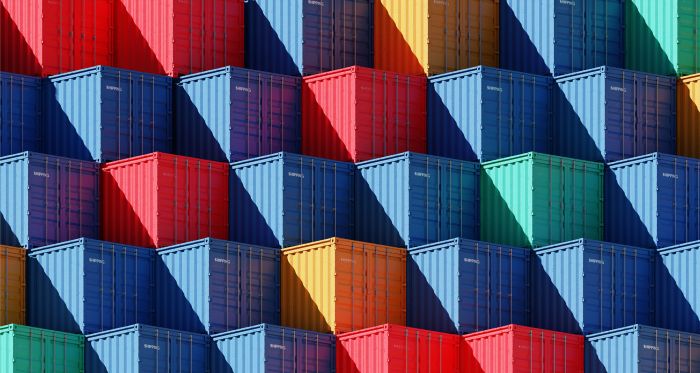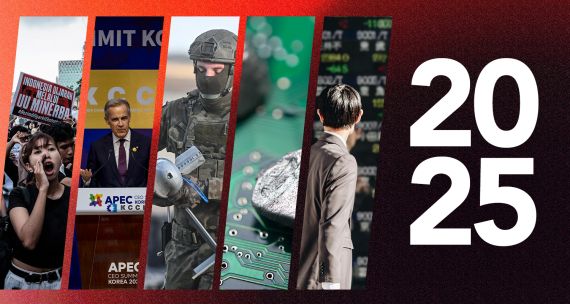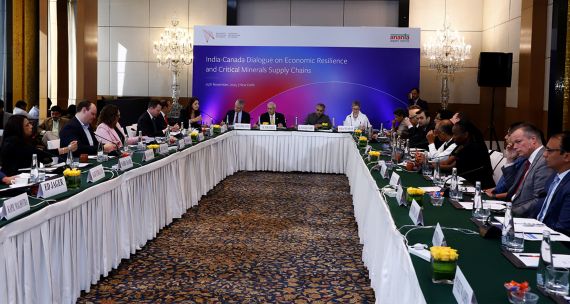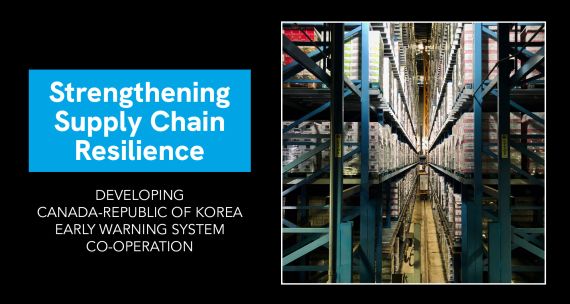What is the CPTPP?
The CPTPP is a free trade agreement (FTA) that primarily consists of countries in the Indo-Pacific. Signed in March 2018, its 11 members include Canada, Australia, Brunei, Chile, Japan, Malaysia, Mexico, New Zealand, Peru, Singapore, and Vietnam. Together, these economies encompass more than 15 per cent of global GDP. Canada is the 2024 Chair of the Commission of the CPTPP, the bloc’s decision-making body.
In July 2023, the U.K. became the first non-founding country to join the CPTPP. The move comes as the U.K. aims to bolster its economy and build post-Brexit ties with “a dynamic and growing group of Pacific economies,” according to British Prime Minister Rishi Sunak.[i] The trade agreement will enter into force for the U.K., its Crown Dependencies and overseas territories, once all current member states complete their respective ratification processes, which will likely take place in the second half of 2024.
The U.S. was initially intended to be part of the CPTPP before the Trump Administration withdrew the U.S. signature in 2017.
What does the CPTPP cover?
The CPTPP is a “high standards” trade pact that aims to facilitate economic co-operation between its parties.[ii] It covers virtually all aspects of the economy, including investment and trade in goods and services. The primary aim of the trade agreement is to create consistent standards amongst all signatories, including in government procurement, customs regulations, intellectual property, rules of origin, labour rights, labour mobility, environmental protection, and inclusive trade. In being a part of the CPTPP, Canada helps ensure that Canadians are able to effectively compete in the Indo-Pacific and conduct business in an environment that is stable and transparent.
What is the CPTPP Commission?
The Commission is the decision-making body within the CPTPP. It consists of government representatives from each member economy and is chaired successively by each party. The Commission’s responsibilities include considering any proposals, amendments, or modifications to the agreement and reviewing membership applications from non-signatory countries. Canada will chair the Eighth Commission Meeting of the CPTPP in 2024.
What are Canada’s responsibilities and priorities as Chair?
The Chair’s primary duties are to host the Commission meeting, provide administrative support, and notify all relevant bodies of any decisions made by the Commission. In 2024, Ottawa will also be tasked with welcoming the pact’s newest member, the U.K., and handling the delicate issue of China and Taiwan’s[iii] applications to accede to the CPTPP.
At the time of publication, an Accession Working Group – the body in charge of negotiating an aspirant economy’s accession bid – had not been created for either China or Taiwan. However, both applicants have been vocal about commencing the negotiating process.[iv]
In addition, Canada’s trade minister Mary Ng has identified leading with Canadian values, expanding Canada’s geopolitical influence, and ensuring that the CPTPP reaches its full potential as priorities for the year.[v] Ng also hopes to support small, Indigenous, and women-led businesses during Canada’s tenure as Chair.[vi]
The previous year, at the Seventh Commission Meeting of the CPTPP hosted by New Zealand, the Commission welcomed the entry into force of the trade agreement for Chile and Brunei, and signed the U.K.’s Protocol of Accession.
How does accession to the CPTPP work?
Application: To join the CPTPP, applicants must formally notify New Zealand, the depositary of the treaty, of their request to commence accession negotiations. The applicant is also encouraged to notify all other CPTPP signatories informally. The CPTPP Commission will begin the accession process “within a reasonable period of time” after the request has been accepted.[vii]
Negotiation: The Commission will establish an Accession Working Group comprised of government representatives from each party. The aspirant economy must demonstrate to the working group that it is capable of complying with the provisions of the CPTPP.
This includes identifying any changes it must make to its domestic laws and regulations to ensure compliance. Once the negotiations are complete, the working group will submit a report to the Commission outlining the terms and conditions of the applicant’s accession.
Approval: The Commission will determine unanimously whether to approve the applicant’s terms and conditions. If approved, the applicant will have six months to complete the reforms necessary for compliance with the trade agreement and formally sign the CPTPP with the depository, New Zealand.
Ratification: Once the aspirant economy has signed the CPTPP, each member state must undergo their respective ratification processes before the trade agreement enters into effect for the applicant.
What was the U.K.’s accession process?
- February 2021: The U.K. submits its accession application.
- June 2021: The CPTPP Commission commences the accession process.
- September 2021: The Accession Working Group (AWG) for the U.K. meets for the first time. Japan serves as the group chair, while Australia and Singapore serve as vice-chairs.
- February 2022: The AWG concludes that the U.K. can comply with most of the obligations in the CPTPP, but some areas need further clarification; negotiations continue.
- March 2023: The AWG confirms that the U.K. can comply with all CPTPP provisions; the Commission agrees to allow the U.K. to join.
- July 2023: The U.K. signs the Protocol of Accession at the Seventh Commission Meeting of the CPTPP in New Zealand.
What other economies are looking to join the CPTPP?
The CPTPP allows the accession of “any State or separate customs territory that is a member of the Asia-Pacific Economic Cooperation (APEC)” or “any other State or separate customs territory as the Parties may agree.”[viii] As of January 2024, the countries and territories that have formally applied are, in order of submission date, China, Taiwan, Ecuador, Costa Rica, Uruguay, and Ukraine. Other countries that have expressed interest in joining include South Korea and Thailand.[ix]
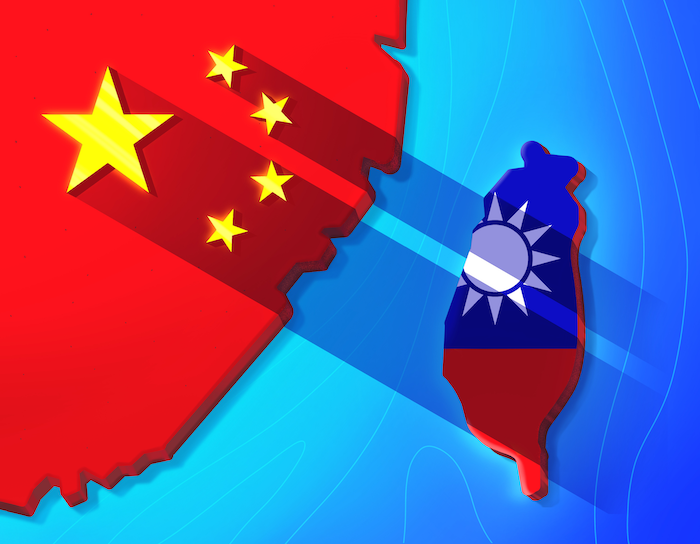 Spotlight: The CPTPP Applications of the People's Republic of China and Taiwan
Spotlight: The CPTPP Applications of the People's Republic of China and Taiwan
The PRC
Strengths:
- The world’s second-largest economy; its ascension would have significant economic benefits.
- Already a signatory to the RCEP, another Asia Pacific FTA.
- Has taken steps to better align its free trade zones with CPTPP rules.[x]
Challenges:
- Will still need major regulatory reforms to adhere to CPTPP provisions.
- Existing members may oppose its application due to non-trade issues (e.g. human rights, security).
- Has strained relations with many member states, including Canada; has a history of weaponizing trade.
- The PRC’s “dual-circulation strategy” (i.e. its goal to become self-sufficient) may be viewed as incompatible with an FTA.[xi]
Taiwan
Strengths:
- Has undergone legislative change to adhere to CPTPP provisions.[xii]
- Economy centres around many critical sectors (e.g. semiconductors), making it a strategic potential member.
- Is already a member of APEC and the WTO; a precedent has already been set regarding its ability to join as a contentious state.
Challenges:
- Member states, particularly some ASEAN members, may not want to jeopardize economic relations with the PRC by allowing Taiwan to join.
Relevant Links:
- CPTPP explained – Government of Canada
- Decision by the Commission regarding the U.K.’s Formal Request to Commence the Accession Process – Government of Canada
- Consolidated TPP Text – Government of Canada
- The CPTPP Bid of China and Taiwan: Issues and Implications – Asia Pacific Foundation of Canada
- Canada’s CPTPP Leadership in 2024: Managing the Rival Accession Bids of China and Taiwan – Canadian Global Affairs Institute
- Ascension Working Group report for the U.K. – CPTPP
- Flowchart outlining the admission process for new CPTPP members – Peterson Institute for International Economics
Endnotes:
[i] The Canadian Press. “U.K. agrees to join Pacific trade pact in post-Brexit deal.” CBC. March 30, 2023. https://www.cbc.ca/amp/1.6796967.
[ii] Government of Canada. “CPTPP explained.” August 28, 2023. https://www.international.gc.ca/trade-commerce/trade-agreements-accords-commerciaux/agr-acc/cptpp-ptpgp/cptpp_explained-ptpgp_apercu.aspx?lang=eng
[iii] Taiwan’s application is submitted under the name of “The Separate Customs Territory of Taiwan, Penghu, Kinmen and Matsu.”
[iv] Ministry of Commerce of the People’s Republic of China. “MOFCOM Regular Press Conference (May 25, 2023).” May 26, 2023. http://english.mofcom.gov.cn/article/newsrelease/press/202306/20230603413748.shtml; Tillett, Andrew. “Taiwan asks Australia to back bid to join trans-Pacific trade deal.” Financial Review. October 2, 2023. https://www.afr.com/politics/federal/taiwan-asks-australia-to-back-bid-to-join-trans-pacific-trade-deal-20230929-p5e8p7.
[v] Government of Canada. “Minister Ng advances cooperation on trade, investment and supply-chain resilience in the Asia-Pacific Region.” November 16, 2023. https://www.canada.ca/en/global-affairs/news/2023/11/minister-ng-advances-cooperation-on-trade-investment-and-supply-chain-resilience-in-the-asia-pacific-region.html.
[vi] McGregor, Janyce. “As major Pacific summit wraps, Canada is sidelined on a new U.S.-led trade initiative.” CBC. November 18, 2023. https://www.cbc.ca/news/politics/apec-summit-canada-ipec-us-1.7032888.
[vii] Government of Canada. “Comprehensive and Progressive Agreement for Trans-Pacific Partnership (CPTPP) – Accession Process.” January 19, 2019. https://www.international.gc.ca/trade-commerce/trade-agreements-accords-commerciaux/agr-acc/cptpp-ptpgp/accession_process-processus_adhesion.aspx?lang=eng.
[viii] Government of Canada. “Consolidated TPP Text – Chapter 30 – Final Provisions.” December 7, 2016. https://www.international.gc.ca/trade-commerce/trade-agreements-accords-commerciaux/agr-acc/tpp-ptp/text-texte/30.aspx?lang=eng.
[ix] Schott, Jeffrey J. “Which countries are in the CPTPP and RCEP trade agreements and which want in?” Peterson Institute for International Economics. July 27, 2023. https://www.piie.com/research/piie-charts/which-countries-are-cptpp-and-rcep-trade-agreements-and-which-want.
[x] Xinhua. “China moves to align with CPTPP rules through FTZ reforms.” July 1, 2023. https://english.www.gov.cn/news/202307/01/content_WS649f5e87c6d0868f4e8dd65c.html.
[xi] Stephens, Hugh, & Kucharski, Jeff. “The CPTPP Bids of China and Taiwan: Issues and Implications.” Asia Pacific Foundation of Canada. https://www.asiapacific.ca/publication/cptpp-bids-of-china-and-taiwan-issues-and-implications
[xii] Ibid.
